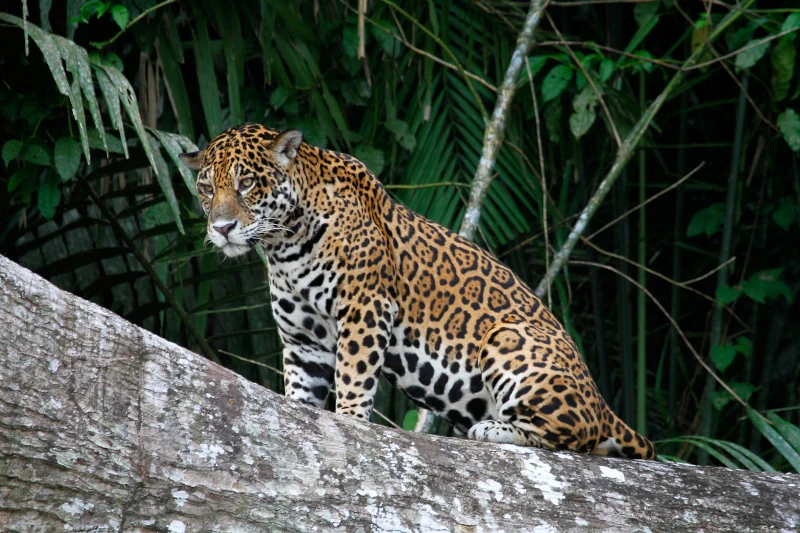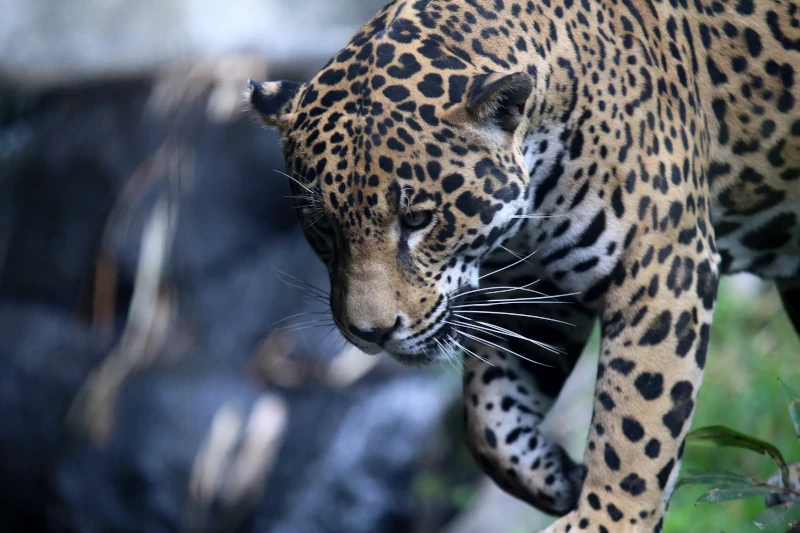Embark on a breathtaking journey through the Amazon Rainforest, home to the elusive and majestic Panthera Onca, commonly known as the jaguar. This adventure will not only satisfy your wanderlust but also provide you with a deeper understanding of one of the world’s most fascinating big cat species. Whether you’re a corporate executive seeking a meticulously planned escape, a freelance photographer in search of the perfect shot, or an academic researcher delving into the complexities of jaguar conservation, this guide is tailored to meet your needs.
The Panthera Onca, familiarly known in crosswords and wildlife discussions as the jaguar, is an apex predator that reigns supreme in the Amazon rainforest. As a member of the Panthera family, which includes lions, tigers, and leopards, the jaguar is known for its powerful build and distinctive rosette-patterned coat.

The Amazon Rainforest provides the perfect backdrop for these magnificent creatures. Jaguars thrive in dense, tropical rainforests where they can skillfully navigate through the thick underbrush and swim across the vast network of rivers. This rich ecosystem supports their diverse diet, which includes deer, peccaries, capybaras, and even caimans.
The rainforest’s dense canopy offers ample cover for jaguars, making them adept at stalking prey undetected. The jaguar’s territory can span large areas, and they often mark these with scent to communicate with other jaguars. The abundance of water bodies in the Amazon also supports their unique hunting behavior, as they are one of the few big cats comfortable in water.
Jaguars play a crucial role in maintaining the balance of their ecosystem. As apex predators, they help control populations of other species, ensuring biodiversity is preserved. Their presence indicates a healthy, thriving environment, as they require large territories and ample prey to survive.
The jaguar’s hunting strategies are vital in regulating the populations of herbivores, which in turn affects vegetation and the overall health of the forest. They also contribute to seed dispersal through their prey, influencing plant growth and forest composition. Understanding their ecological role underscores the importance of ecotourism in Peru’s rainforest and the need to protect their habitats.

Sadly, the jaguar is classified as near-threatened due to habitat loss and poaching. Conservation efforts are in place to protect their territories and ensure their survival. Visiting the Amazon not only provides a chance to witness these animals in their natural habitat but also supports local conservation initiatives.
Conservation programs focus on creating protected areas and corridors that allow jaguars to roam freely and safely. These initiatives often involve collaboration between governments, NGOs, and local communities. However, challenges remain, such as illegal logging, mining, and agriculture that encroach on jaguar habitats. Raising awareness and supporting sustainable practices are key components of these efforts.
The Amazon Rainforest is a year-round destination, but the dry season from June to November is ideal for jaguar spotting. During this time, water levels are lower, making it easier to explore and increasing the chances of encountering these elusive cats.
The dry season also means fewer mosquitoes and more manageable hiking conditions, enhancing the overall experience. While jaguars are elusive, the season’s conditions make them more likely to venture near riverbanks and open areas. This period also offers a more comfortable climate for travelers not accustomed to the intense humidity of the rainforest.

For the time-strapped corporate executive, a well-organized itinerary is crucial. Start your journey in Manaus, the gateway to the Amazon. From there, embark on a guided tour with local experts who can lead you to prime jaguar habitats. Opt for a river cruise or a lodge deep in the rainforest, where you can enjoy the tranquility of nature and the thrill of spotting a wild jaguar.
For the freelance photographer, the Amazon offers endless opportunities to capture the beauty of the jaguar and its surroundings. Join a specialized photography tour that provides insider access to the best locations and includes tips on capturing the perfect shot.
Academic researchers will benefit from connecting with local conservation organizations. These partnerships can offer valuable insights and logistical support, making it easier to conduct fieldwork and engage with local communities.
The Amazon is home to diverse amazon communities, each with its unique customs and traditions. Engaging with these communities offers a rich cultural experience, providing insight into their harmonious relationship with the environment.
Visitors can participate in cultural exchanges that include traditional music, dance, and crafts. Learning about their sustainable living practices and deep-rooted knowledge of the rainforest adds depth to the adventure. These interactions foster mutual respect and understanding, highlighting the importance of preserving both cultural and natural heritage.

For photographers, understanding cultural nuances is key to capturing authentic images. Engage with locals respectfully and take the time to learn about their way of life. This approach will enrich your storytelling and result in more meaningful photographs.
Respecting privacy and gaining consent before taking photos ensures ethical practices. By building rapport with community members, photographers can capture genuine moments that reflect the true essence of Amazonian life. These images not only tell a story but also contribute to raising awareness about the region’s beauty and challenges.
The indigenous communities of the Amazon have thrived for centuries by living in harmony with their environment. Their traditional knowledge and practices contribute to the conservation of the rainforest. Understanding this relationship offers valuable lessons in sustainability and environmental stewardship.
Visitors can learn about traditional medicinal plants, sustainable hunting methods, and agricultural practices. This knowledge exchange fosters appreciation for indigenous wisdom and highlights the importance of integrating traditional practices into modern conservation strategies. The Manu National Park plays a big part in appreciating this species.

Jaguars are solitary creatures, primarily active in the night jungle. Unlike other big cats, they are excellent swimmers and often hunt in water. Their powerful jaws can crush the skulls of prey with a single bite, a unique adaptation among the Panthera family.
Their elusive nature makes them challenging to observe, but their distinctive tracks and vocalizations can often be detected by keen observers. Jaguars have a varied diet, adapting their hunting strategies to available prey, which showcases their remarkable adaptability. Understanding these behaviors offers insights into their survival strategies and ecological importance.
Jaguars play a crucial role in maintaining the balance of the Rainforest ecosystem. As apex predators, they help control populations of other species, ensuring biodiversity in Manu National Park preserved.
Their presence indicates a healthy ecosystem, as they require vast territories and abundant prey. Jaguars help maintain the balance between predator and prey populations, which influences vegetation and habitat structure. Conservation of jaguars is thus crucial, not just for their survival but to preserve the Amazon.
Despite their ecological importance, jaguars face numerous threats, including habitat fragmentation and human-wildlife conflict. Poaching and illegal wildlife trade pose significant risks to their populations.
Conservation efforts must address these challenges through habitat protection, anti-poaching measures, and community engagement. Raising awareness and promoting coexistence strategies are vital for the long-term survival of jaguars in the wild. Collaborative efforts between governments, NGOs, and local communities are essential to create sustainable solutions.
Embarking on an Amazon Rainforest jaguar adventure is more than just a travel experience; it’s an opportunity to connect with nature, support conservation, and gain a deeper appreciation for the cultural and ecological richness of this region. Whether you’re seeking a luxurious escape, a photographic journey, or the best tours, the Amazon river offers something unique for every traveler.
Pack your bags and prepare for the adventure of a lifetime, where the Panthera Onca roams freely in one of the most biodiverse places on Earth. Embrace the chance to witness these magnificent creatures and contribute to their preservation, ensuring future generations can also experience the magic of the Amazon.